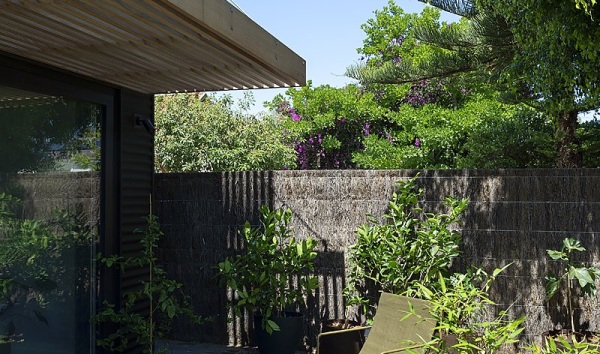Biophilic design is a nature-centric principle with roots dating back many decades. It aims to improve mental and physical health and connect people more closely to nature.
Elements such as light, space, and air quality in modern buildings and homes create the basis of Biophilic design.
Pioneered by Dr Stephen Kellert, the movement is embraced by people seeking healthier, more eco-friendly lifestyles.
Where Biophilic design stems from
Biophilic design draws on the idea that nature shapes our bodies, minds, and senses. Dr. Stephen Kellert, a professor at Yale, promoted this concept. He believed our environment should reflect the natural world, not just human-made spaces.
His research and writing have improved our understanding of the link between humans and nature. They show how our homes can positively affect our health and well-being.
Biophilic design is becoming more popular in modern interiors, focusing on creating spaces that connect people with nature.
While comfort, efficiency, and durability are paramount, an authentic Biophilic design incorporates natural light, ventilation, low-tox materials, open spaces, natural shapes and forms and vegetation.
Kellerts’ framework has been the basis for including more Biophilic design principles in modern buildings and homes. Below are the dimensions and attributes that define Kellerts’ Biophilic framework:
Direct experience of nature
Science now understands that our need to be close to nature comes from our evolutionary past. This connection is linked to food, shelter, and safety.
Many design movements focus on function and form. However, Biophilic design connects us with nature. It blends the natural and built environments. This design includes plants, water, natural materials, and eco-friendly elements in buildings.
Indirect experience of nature
Nature-inspired images, colours, artwork, patterns, and naturalistic shapes all help us connect to nature.
A number of design strategies can achieve this, including maximising views, adding artwork of nature, using natural materials, or even simulating natural lighting.
Experience of space and place
Good architectural design requires a link between a building and nature. It is essential to blend the building with its surroundings.
Replicating nature with materials and techniques like green roofs, living walls, and shade trees helps create homes for wildlife. This approach boosts biodiversity and lowers energy use by providing insulation.
Earthy tones such as greens, browns, and blues mimic the natural environment, creating a sense of calm and tranquillity.
What are the benefits of Biophilic design in home builds?
Research shows that Biophilic design can help you feel better. It can improve physical and mental health, reduce stress, and boost mood. This happens through exposure to natural elements like sunlight, water, and plants.
Design principles that maximise space and natural light make people feel more connected to the outdoors.
Living plants improve air quality and create a calm environment. Natural materials and finishes like stone or timber create a harmonious feel, and landscaping features can rejuvenate sterile environments and improve biodiversity.
Health benefits (specifically physical health)
Many people live in an increasingly urbanised environment, which exposes us to more pollution.
Being around toxic chemicals in paint, building materials, furniture, and household items can harm your health.
Biophilic design is a new way to connect buildings with nature. It creates a beautiful look that transforms spaces.
Natural materials and plants improve air quality, reduce stress, and enhance well-being. Access to natural light and outdoor views has also improved sleep patterns.
Mental health benefits
In an increasingly digital environment, turning off, connecting with nature, and relaxing have never been more critical. These activities positively impact mental health and overall well-being.
Adding sunlight, plants, and water features to indoor spaces creates a calm and peaceful atmosphere and reduces stress.
Add shared outdoor spaces like patios, rooftop gardens, or courtyards. These areas encourage outdoor activities and social interactions and promote well-being.
Environmental benefits
Biophilic design is a healthy way to create spaces. It focuses on human well-being and environmental sustainability.
More people are managing their reliance on fossil fuels and consciously reducing their carbon footprint by planting trees and harvesting food.
Boosting biodiversity means giving access to water and planting native gardens that attract bees. Green roofs and living walls can create year-round homes for birds and insects.
Biophilic design in your home
With more people working from home and spending less time outdoors, many Western Australians are turning to simple home designs that connect indoor and outdoor spaces effortlessly.
By incorporating Biophilic design principles into new or existing homes, you can experience the mental, physical, and lifestyle benefits this approach offers.
Some practical options include:
- Positioning your home to maximise shade in summer and sunlight in winter.
- Using technology to control heat loss or gain.
- Ventilation systems should be installed with heat recovery to bring in fresh air without losing warmth.
Adding natural Biophilic elements like space, light, air, water, plants, and views of natural landscapes enhances these benefits. The result is a more beautiful home with economic savings, improved functionality, and better health in everyday living.
Your Biophilic-inspired home
Biophilic design is no longer an obscure concept or an unattainable dream. Today, it can be seamlessly integrated into your new home without compromising aesthetics, performance, or efficiency.
If you want a healthier, eco-friendly lifestyle with added health benefits, let us help you build a durable, energy-efficient, sustainable home. Our designs reflect your style and values while creating a comfortable and tranquil space.
